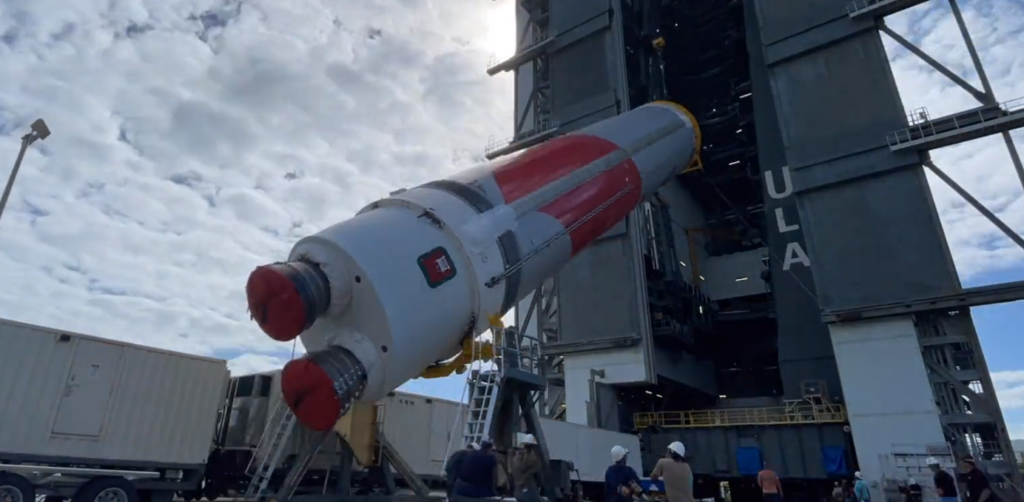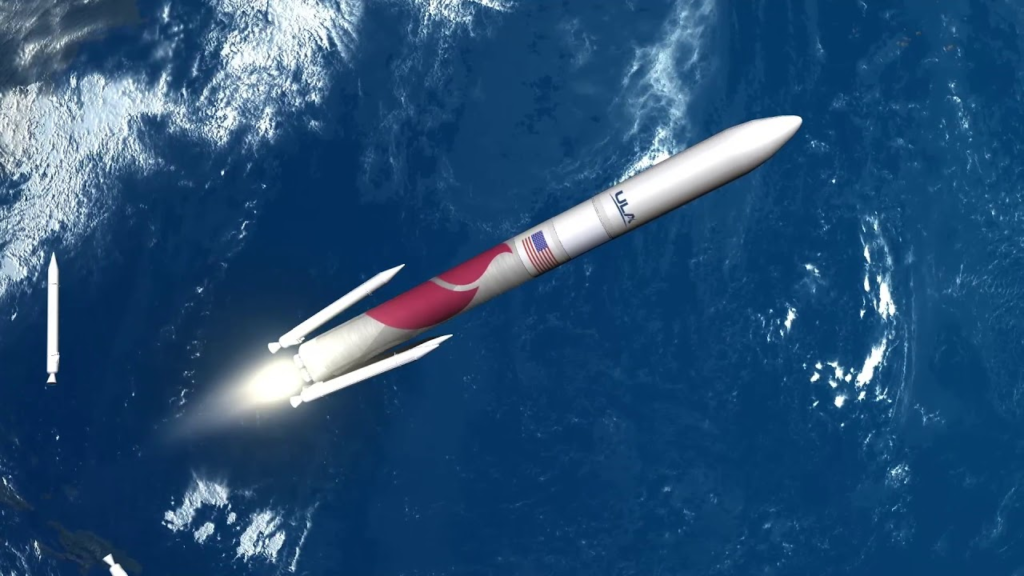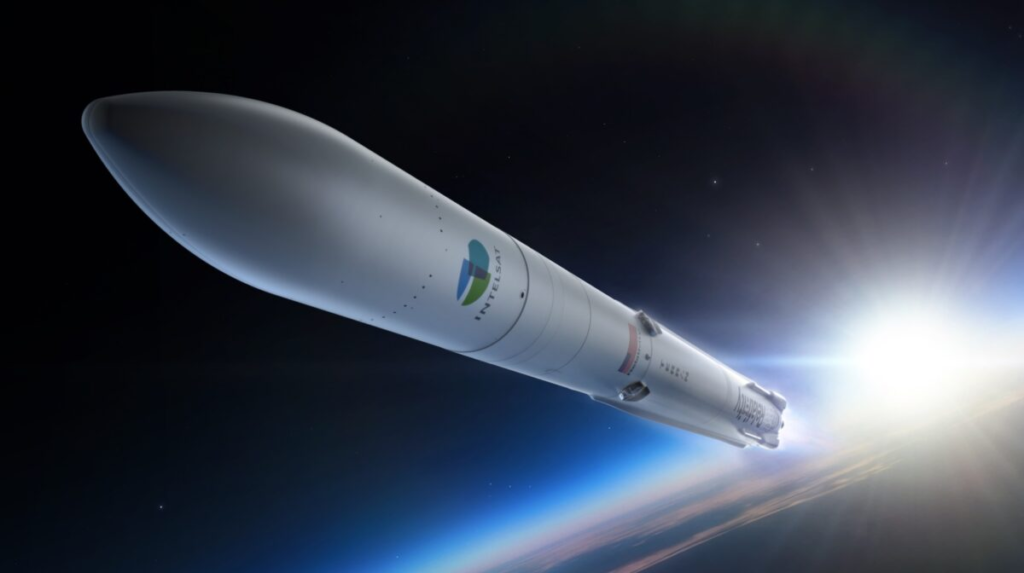
ULA Has Confirmed Vulcan’s Maiden Launch Date
After lots of delays, Vulcan’s first test article is back on the pad awaiting the arrival of its upper stage for a in two months. The vehicle is said to be ahead of schedule as they target Christmas Eve or December 24th as the launch date.
In other news, Rocket Lab has received FAA authorization to resume Electron launches from LC-1. This comes after the company’s most recent Electron launch that had an anomaly losing both the vehicle and payload.
Lastly, Relativity Space has been very busy building test stands, manufacturing complexes, and testing Terran R’s new Aeon R engine hardware. Here I will go more in-depth into Vulcan’s new launch date, Rocket Lab’s investigation, Relativitity’s progress, and more.
Vulcan Returns To The Pad

Months ago United Launch Alliance’s new vehicle, the Vulcan Centaur, was nearing its first launch when a separate upper stage experienced a test anomaly. The explosion revealed a weak point in the tank dome and the company determined that it needed to be fixed. The upper stage was de-stacked from the first and shipped to the factory for upgrades.
For a while now the company has been aiming to launch in December but we just got an official launch date. Yesterday ULA tweeted and confirmed that the first launch will happen on December 24th. As far as the exact whereabouts of this upper stage, Tory Bruno, ULA CEO tweeted saying, “Still running ahead of schedule. Here it is in the finishing station.”
Once the stage arrives and is stacked once again on the first stage, we can expect some additional testing before it’s approved to launch. This will include another wet dress rehearsal even though one was completed back in March. During the test, they will fill the Vulcan first stage and Centaur V upper stage with cryogenic propellant on separate days to validate performance of the stages, Vulcan Launch Platform (VLP), Space Launch Complex-41 facilities and ground support systems. Once complete, Engineers will review the tanking test data collected and information gained in test objectives aimed at characterizing performance of hardware and confirming analytical predictions.
By now we have already seen a Flight Readiness Firing where the two BE-4 engines ignited for the first time on Vulcan. This flight will also be the first time Blue Origin’s BE-4 engine hardware launches. Up until now, the engines have only been tested on the ground after many years of development. With Blue Origin ramping up production, they really need a successful launch without any issues.
Focusing back on the upper stage, an investigation after the test failure eventually found that the leak originated in the forward dome of the tank, which is made of very thin stainless steel, near a door at the top of the structure. A very detailed finite element model of that part of the tank revealed a “stress riser,” or intensification of loads, because of the complicated geometry around that part of the dome. More importantly, they realized that this weakness was not unique to this specific test article, but all the upper stage forward domes.
Thankfully, the necessary fix was not extremely intensive and within just a few months the company was able to get Vulcan’s upper stage complete and ready. Vulcan has a lot riding on it and truly is the future of ULA. They highlight that the vehicle can be built in less than half the time as its predecessors and launched at a much higher tempo. More than 70 Vulcan launches are currently on the manifest, including 38 launches to deploy a majority of Amazon’s Project Kuiper to provide fast, affordable broadband to unserved and underserved communities around the world; approximately 20 to 30 missions as the U.S. Space Force’s No. 1 offeror in the National Security Space Launch (NSSL) Phase 2 procurement; and the orbital delivery of Sierra Nevada Corp.’s Dream Chaser reusable spaceplane on cargo resupply missions to the International Space Station. All of which are relying on this first flight in December to go smoothly.
Rocket Lab FAA Authorization

Rocket Lab’s launch operations have been put on hold for over a month now after the last Electron launch failed to reach orbit on September 19th. During the flight, the upper-stage engine appeared to shut down moments after ignition. Here you could see sparks and the drop in telemetry along with the video feed. The failure resulted in the loss of a Capella Space synthetic aperture radar imaging satellite.
Right after the anomaly Rocket Lab CEO Peter Beck tweeted saying, “Tought day. My deepest apologies to our mission partners Capella Space. Team is already working on root cause. We’ll find it, fix it and be back on the pad quickly.” It had been a while since an Electron anomaly but followed the theme of what looks to be an issue with the upper stage, which past anomalies also experienced. Two days ago on the 25th we got an update form the company in another tweet that said, “We have received FAA authorization to resume Electron launches from LC-1. We expect to complete the full flight investigation report in the coming weeks & currently anticipate a return to flight later this quarter with corrective measures in place. Thank you to FAANews and our customers for your continued support.”
Right now, the FAA is providing oversight of Rocket Lab’s mishap investigation to ensure Rocket Lab complies with its FAA-approved mishap investigation plan and other regulatory requirements. In addition, the National Transportation Safety Board (NTSB) was granted official observer status to the investigation. The full review is expected to be completed in the coming weeks, with Rocket Lab currently anticipating a return to flight later this quarter with corrective measures in place.
Peter Beck said, “After more than 40 launches, Electron is a proven, mature design with a well-established manufacturing process behind it, so we knew the fault was going to be something complex and extremely rare that hasn’t presented in testing or flight before. Our investigation team with FAA oversight has worked around the clock since the moment of the anomaly to uncover all possible root causes, replicate them in test, and determine a path for corrective actions to avoid similar failure modes in future. We look forward to sharing the details of the review once it is fully complete ahead of returning to flight this quarter” he said.
Overall this is good news for the company which is expected to fly again within the next two months, likely in December. Based on their confidence the engine anomaly was most likely a very rare and unique issue that shouldn’t happen again thanks to the information gained and lessons learned. Earlier this month on the 4th, Rocket Lab’s chief financial officer, said only that the investigation was in its “early days” and that the company expected a return to flight of Electron similar to two previous failures in July 2020 and May 2021. It’s also not fully clear the financial impact this failure has had on the company.
Relativity Engine Development

Relativity Space, the company working on a massive reusable 3D-printed rocket named Terran R has been very busy over the last couple of months and recent days. The two main areas of focus have been building infrastructure and developing Aeon R, Terran R’s main engine.
Early last month, Relativity signed an enhanced use lease agreement (EULA) on the vertical test stand at the A-2 complex within NASA’s historic Stennis Space Center in Hancock County, Mississippi. The agreement marks the first time a commercial tenant has modernized an underutilized legacy test stand at NASA Stennis, signifying the strength of the public-private partnership between the two entities. The expansion brings Relativity’s total footprint at NASA Stennis to nearly 300 acres – the largest commercial presence on the site.
The new infrastructure will support advanced vertical first stage testing for their medium-to-heavy lift reusable 3D printed rocket, Terran R. With a new stand, the company hopes to uplevel their cadence of testing, increasing the speed of iterative learning cycles and shortening time to market. Originally designed to withstand maximum thrust of 1.5 million pounds, the A-2 Test Stand is currently configured to endure thrust up to only 650,000 pounds. With Relativity’s upgrades, the stand will be able to accommodate thrust of over 3.3 million pounds.
As far as physical rocket development, there has been constant testing of Aeon R engine hardware. Specifically, Terran R’s first stage will be outfitted with 13 3D-printed gas generator cycle Aeon R LOx/Methane rocket engines each capable of 258,000 lb. sea level thrust, while its second stage houses a single LOx/Methane Aeon Vac engine with 279,000 lb. vacuum thrust. The engine composition on the first stage is comprised of four outer fixed engines aligned underneath four landing legs, and nine center gimbaled engines, providing enhanced reliability on vehicle ascent with engine-out capability. On both Terran R stages, the LOx propellant tanks are forward of the methane tanks, separated by a printed common dome. Subcooled cryogenic propellants are used on all parts of the vehicle except for the first stage liquid oxygen system, where subcooling is not necessary to meet performance goals.
Some of the testing includes Thrust Chamber Assembly or TCA, Gas Generator Cycle, and Subscale injector, just to name a few. All of which have been going on for over a year now. They continue this development and testing as more and more funding comes in.
Earlier this month, they announced that they had signed a multi-year, multi-launch Launch Services Agreement (LSA) with Intelsat, operator of the largest integrated space and terrestrial network in the world. Under the agreement, Relativity will launch Intelsat satellites on Terran R as early as 2026. Relativity now has a total of nine signed customers for Terran R, including multiple launches and totaling more than $1.8 billion in backlog.
“We are honored to be working with Intelsat to launch future spacecraft into their industry leading satellite fleet,” said Tim Ellis, Co-Founder and CEO of Relativity Space. “They have an incredible company and team as a world leader in content connectivity with nearly 60 satellites already in orbit. The space industry clearly requires more commercially competitive, diversified, and disruptive launch capacity. Relativity is developing Terran R as a customer-focused reusable launch vehicle to solve this need. We look forward to planning, executing, and successfully launching these missions together with Intelsat ” he said.
With satellite technology advancements, demand for bandwidth soaring, and satellite constellations representing the largest part of the growing launch market with a Total Addressable Market of over $30B/year by 2030, Terran R was developed to try and accommodate the growing demand for large constellation launch services. With a payload fairing that offers the right market fit to meet a variety of needs, Terran R is hoping to support use cases from dedicated payload deployments of constellation customers or single geosynchronous satellites to rideshare configurations for multiple customers per launch. The company used Terran 1 as a test article, and after its first launch, retired the vehicle to fully focus on Terran R. As of right now, Terran R is set to launch from Launch Complex 16 at Cape Canaveral Space Force Base starting in 2026.
Conclusion
Vulcan’s first launch date has been officially set and it’s less than two months away on the 24th of December. This maiden flight is very important with the amount of missions riding on the vehicle’s success. At the same time, companies including Rocket Lab and Relativity are working on their own technology and place within the market. We will have to wait and see how it progresses and the impact it has on the space industry.
